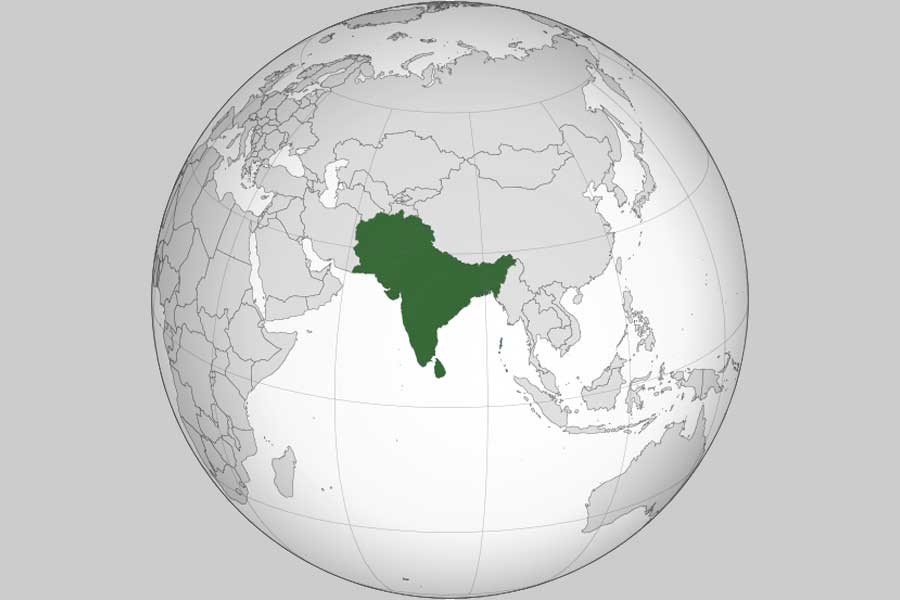
Published :
Updated :

Whereas intra-regional trade among the ASEAN countries account for 25 per cent of their total, the figure is barely 5.0 per cent for the countries of South Asia. The largest SAARC country India's bilateral trade with Bangladesh is only 1.0 per cent of her total trade.
In fact, transport and trade challenges in South Asia result in high cost of intra-regional trade. Factors identified as responsible for this high cost include inadequate transport infrastructure, protective tariffs, non-tariff barriers, and a trust deficit across the region. Significant economic gains can however be derived through removal of these constraints and integration of the region.
This has been the finding of a recent World Bank study titled 'Connecting to Thrive: Challenges and Opportunities of Transport Integration in Eastern South Asia'. It identified the building blocks for seamless regional connectivity through Bangladesh-Bhutan-India-Nepal (BBIN) Motor Vehicles Agreement (MVA).
A set of regional and domestic measures is needed for reaping the benefits of regional freight connectivity. These are: effective regional integration agreements; policies that ensure quality and competitiveness of transport service markets; and an integrated transport infrastructure-cum-network that is capable of tackling the demand efficiently. That would require proper utilisation of road, rail and inland water corridors, as well as land, river and seaports, for handling current and future freight volumes in a timely and cost-effective fashion. Although agreements can eliminate policy constraints for integration of transport service markets, complementary non-transport interventions would also be needed for ensuring cost-effective and high quality transport services.
The South Asian countries have been attempting to reach multilateral agreements for creation of an integrated and modern transit system, but the attempts failed due mainly to tensions between India and Pakistan. In this backdrop, the countries of eastern South Asia - Bangladesh, Bhutan, India and Nepal (BBIN) - have signed several bilateral and multilateral agreements on connectivity.
One such agreement - the MVA - was signed by BBIN countries in 2015. It sought to facilitate unhindered cross-border movement of cargo, passenger, and personal vehicles across these countries. Trucks carrying export-import or transit cargo would move to the territories of other countries without transfers to local trucks at land ports under the agreement. However, the MVA has been delayed as the respective countries are still working to clarify some of the provisions in the targeted protocols.
The MVA was signed in Bhutan, but the legislature of that Himalayan country has not yet ratified the agreement, although Bangladesh, India and Nepal have done so. The Bhutanese legislature cited gaps and conflicts between the agreement and their national concerns in areas like immigration, routes, infrastructure, ability to compete, and environmental impact. However, Bhutan has the option to ratify the agreement any moment whenever those gaps or conflicts are resolved.
Critical gaps include a lack of standards for infrastructure design based on which services are allowed; absence of rules on training and issuance of drivers' licences; and omission of general principles for transit movements. The MVA also provides for operations only through specified routes and designated border crossings, which can become a constraint when trade interactions become more complex and intense. Besides, the agreement put a heavy regulatory burden on operators by requiring at least 10 documents that must be carried by each passenger vehicle and nine by each cargo vehicle.
Despite the gaps, the MVA presents a significant opportunity for creation of integrated road transport market. For actualising its potentials, the concerned countries should negotiate the protocols for addressing some missing features. In doing so, priority should be accorded to technical aspects of transport services, requirements for goods carriage, and driver qualification-cum-licencing. Some policy actions the WB report has prescribed for strengthening the MVA include harmonising the driver licencing and visa regimes, standardisation of road signage, driver training and insurance. The agreement requires vehicle crews to carry passports with multiple-entry visas valid for at least one year. But it does not spell out where the visas should be issued. In fact, Bhutan cited the provision on visas as one of the reasons for not ratifying the agreement.
A well-functioning transit regime is essential for efficient cross-border road transport operations. But the MVA does not provide much detail on transit. Lack of integrated and modern transit regimes has long been a barrier to transit traffic across South Asia. Given the geography of the region where transit across foreign territory is often unavoidable, there is an urgency to develop such a regime amid the on-going and planned improvements in intra and inter-regional connectivity. The policymakers can borrow from international best practices and exploit the new IT capabilities in data-sharing and cargo-tracking by customs authorities.
There are two critical considerations for introducing an efficient transit regime. Firstly, a functional transit procedure through Bangladesh is required for seamless movement of goods between West Bengal and the north-eastern Indian states, and for traffic between Bangladesh, Bhutan and Nepal via India with no undue waiting time at the border owing to inspections or trans-loading. Secondly, mechanisms should be put in place to allow the transit countries (Bangladesh and India) to recover the costs associated with the use of their infrastructure and services by foreign vehicles based on universal principles of transit freedom.
Rationalisation and digitisation of documents are also required, as the MVA lists 11 documents that must be carried by a vehicle. These are in addition to over 22 documents and 55 signatures needed for Indo-Bangladesh trade. The number of documents the drivers have to carry can be significantly reduced by defining and adopting data standards and sharing data among competent authorities that regulate road transport services. Moreover, routes' selection should be rationalised by removing the constraints on routes and leaving that decision to shippers and carriers.
Dr Helal Uddin Ahmed is a retired Additional Secretary and former Editor of Bangladesh Quarterly


 For all latest news, follow The Financial Express Google News channel.
For all latest news, follow The Financial Express Google News channel.